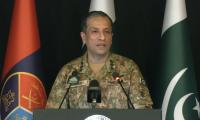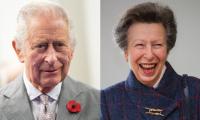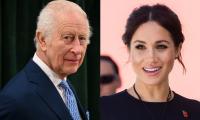Political analysts and world watchers viewed the burgeoning rivalry between the US and China as the possible beginning of yet another cold war era. That process seems to have been hastened by the Ukraine crisis. And like the first cold war the world might see the same rivals confronting each other and dividing the world into two blocks with all its debilitating effects on world peace and security, besides its economic fall-out for the poorer nations.
The Ukraine crisis and US animosity towards China as reflected by its ‘contain China policy’ is likely to push Russia and China towards making a common cause against the US and its allies.
The architect of this scenario, to a great extent, is the US which also enjoys unqualified support of its allies and the members of Nato both from the cold-war era and the new entrants after the fall of the Berlin Wall and break-up of the former Soviet Union. It is pertinent to mention that after the fall of the Berlin Wall, the US assured Gorbachev that Nato would refrain from its expansion towards the east. Many Western allies of the US and Nato members also reiterated this pledge. But after the dismemberment of the Soviet Union into 15 independent countries, the assurances given to the former Soviet leader were violated unilaterally. The Baltic States and seven of the eight former members of the Warsaw Pact were taken into Nato’s fold.
Since 2008, efforts were also on the anvil to woo Georgia and Ukraine to join Nato. Putin was strongly opposed to the proposition which he considered a threat to Russia’s security, and rightly so. Independent observers believe that the crisis is a sequel to flawed US diplomacy over the years which included wriggling out of the commitment given to Russia regarding Nato not expanding towards the east; the US sponsored coup in Ukraine which catapulted a pro-US regime into power; withdrawal of the US from the Intermediate-Range Nuclear Missile Treaty and placement of such missiles in Poland in 2019; and the overdrive exhibited by US against the opening of a pipeline Nord Stream 2 which would supply Russian gas to Germany. The US and its allies have also been exhibiting the determination to keep the possibility of Ukraine joining Nato open – maintaining that Ukraine had the sovereign right to take decisions about its future orientation.
With a view to counter the machinations of the US and its allies and to put pressure on Ukraine to refrain from joining Nato, Russia has been supporting separatists in eastern Ukraine who have been at war with the central government since 2014. Putin also demanded legal guarantees for Russian security in December 2021 in the form of draft treaties with the US and Nato.
The proposed treaties demanded Nato to rule out its further expansion eastwards; Nato foregoing military cooperation with Ukraine; non-deployment of Nato troops and weapons on the soil of its members in Eastern Europe. The adoption of the demanded treaties would have put Nato under obligation to dismantle its forces stationed in Poland and Baltic states. The treaties would have also required the US to withdraw nuclear weapons from Europe without any reciprocal concessions from Russia. However, diplomatic engagements between Russia and the US and Nato on these demands failed to make any headway.
Instead, the US offered to discuss limiting missile deployments in Europe, putting curbs on military drills and other confidence-building measures to which Russian response was in the negative as it did not consider the proposition as a plausible solution to her security concerns. It was in the backdrop of the foregoing developments that Russia amassed its troops on its borders with Ukraine because it wanted to dissuade Ukraine from joining Nato at any cost. The deployment of troops created an alarming situation.
To defuse the situation the American president held several sessions of talks with Putin to find a diplomatic solution to the crisis. A number of European leaders including French President Macron and German Chancellor Scholz also visited Moscow, but no breakthrough could be achieved. The US and its allies also threatened Russia with serious consequences in case it invaded Ukraine, but Russia refused to bow to these intimidations and launched a military offensive against Ukraine 24 February 24. Before the blitzkrieg Russia also extended recognition to Eastern regions of Donetsk and Luhansk of Ukraine and contended that the military action was in response to the letters written by the separatist leaders to save them from attacks by the Ukrainian army.
The US and its Nato allies have responded with clamping multiple sanctions against Russia besides efforts at the UN to condemn the Russian action urging it to cease hostilities and give diplomacy a chance. Russia has employed its own sanctions against the US and the countries of the European Union and refuses to pay heed to what the US and its allies are demanding. As is evident, it would not settle on anything less than guarantees about Ukraine not joining Nato. That assurance does not seem to be coming forth at the moment.
Meanwhile, the president of Ukraine has expressed his disappointment over the US and European response to the Russian attack. It wants direct intervention by them to stop Russia in its tracks. Nato has also not agreed to his proposal for a no-fly zone, with the Nato chief saying that the alliance would not intervene in the conflict over fears of a direct clash with Moscow that could spiral into a nuclear war. The US and its allies are however more than willing to supply arms to Ukraine to ward off Russian aggression and inflict economic pain on Russia. Looks like Ukraine will have to fight it out itself or succumb to Russian demands. My hunch is that though the US and Nato will not intervene directly, they will make sure that Russia remains bogged down there for a long time.
It looks like a long drawn-out conflict. In the meantime, while China has emphasised a diplomatic solution to the crisis, it has strongly supported Russia’s security concerns and also refrained from voting against a resolution condemning Russian attack on Ukraine at the UNSC. If the conflict prolongs and the US and its allies persist with their ‘contain China policy’ it would surely bring Russia and China together. Such a scenario would have a serious impact on the entire region and countries like Pakistan would find it very difficult to formulate a foreign policy that saves them from the negative fall-out of the likely commencement of the new cold-war.
The writer is a freelance contributor. He can be reached at: ashpak10@gmail.com
People of that time believed that an eclipse was a symbol of displeasure of gods
Debt-to-GDP ratio, which stood at 51% in 2009-10, peaked at 74% in 2019-20 and remains alarmingly high at 65% in 2023-24
Point is not to pour cold water over government’s achievements, but to look at baseline metrics
Loss of biodiversity is stark reminder that urban mismanagement is not just infrastructural failure but ecological...
Strong public warning systems can also help ensure quick evacuations in places prone to fires
PPPs in Pakistan's WASH sector face significant regulatory and policy challenges that hinder their effectiveness







